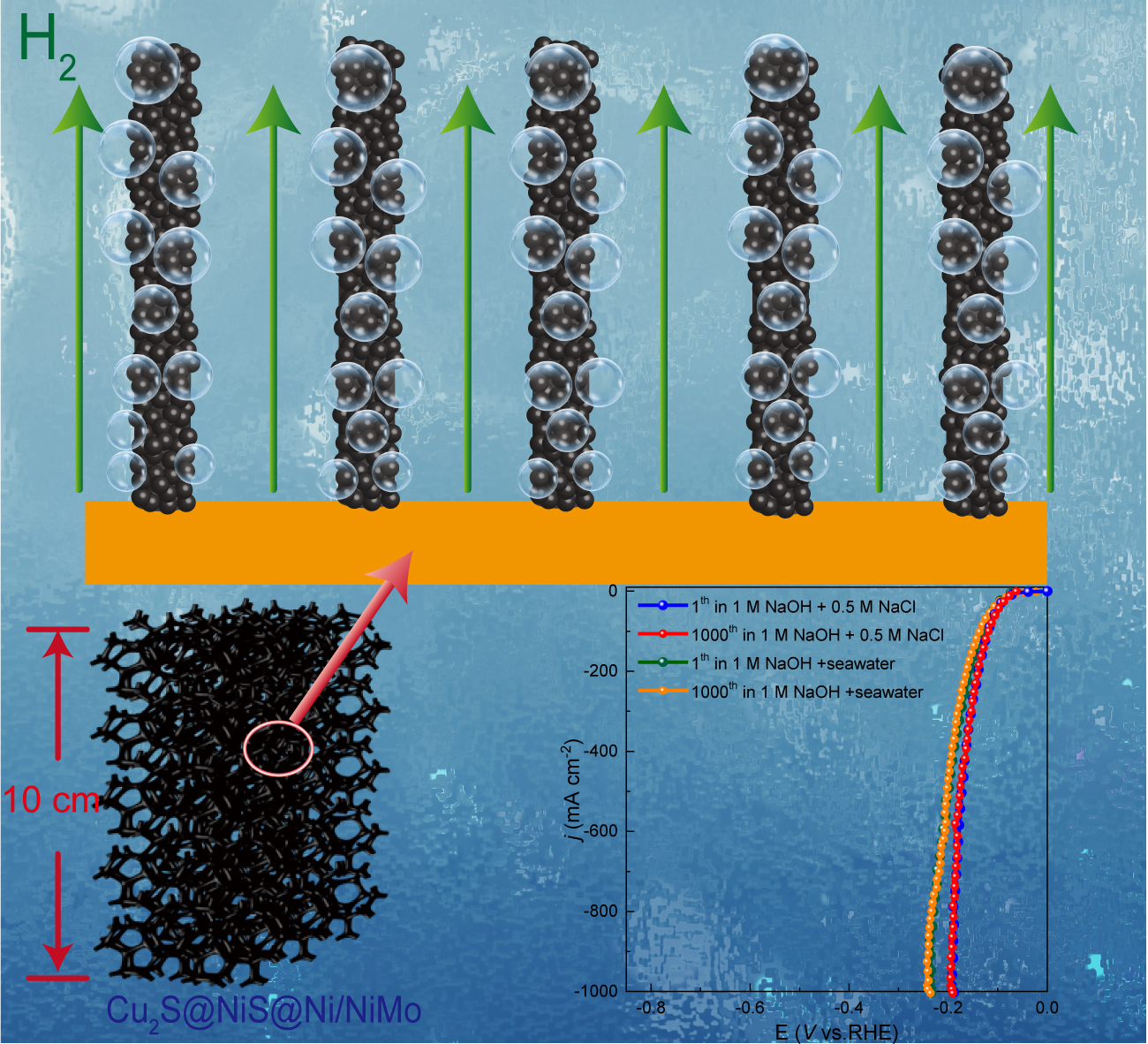A research group led by Prof. LU Zhiyi from the Ningbo Institute of Materials Technology and Engineering (NIMTE) of the Chinese Academy of Sciences (CAS) has proposed a facile and cost-effective strategy to synthesize a hybrid cathode to achieve high-performance seawater electrolysis for hydrogen generation.
The study was published in Advanced Functional Materials.
Hydrogen can be generated through seawater electrolysis, which helps conserve freshwater supplies and is therefore considered as a sustainable energy conversion and storage strategy.
Seawater electrolysis, powered by offshore renewable energy sources such as solar, wind, and tidal energy, is a promising critical pathway to green hydrogen production, contributing to the goal of "carbon peaking and carbon neutrality". However, the complex fluctuation of offshore renewable energy, such as solar, wind, and tidal energy, under extreme conditions has limited the performance of hydrogen generation.
In view of this, the researchers proposed a facile strategy involving etching, sulfuration, and electrodeposition to synthesize a Cu2S@NiS@Ni/NiMo cathode on the scale of 10 × 10 cm2.
The hybrid cathode exhibited superior hydrogen evolution performance with overpotentials of 190 and 250 mV at a current density of 1,000 mA cm-2 in alkaline artificial seawater and real seawater, respectively.
In addition, the superaerophobic nanoarray structure enables hydrogen mass transport even at high current density.
Under steady-state conditions, the developed cathode showed negligible overpotential loss after over 2,000 h at 500 mA cm-2, indicating the excellent stability of the cathode.
Despite the complex fluctuation of offshore renewable energy, the hybrid cathode showed great anti-corrosion ability, with an endurance of 1,500 h under accelerated start/stop practical conditions.
This work has provided an efficient and synthesis method to synthesize high-performance cathodes for industrial scale-up hydrogen generation through seawater electrolysis.
Moreover, the evaluation of performance and costs has illuminated the great potential of the synthesized cathode in industrial scale-up sustainable hydrogen production.
The study was supported by the National Key Research and Development Project of China, the Ningbo Yongjiang Talent Introduction Programme, the Bellwethers Project of Zhejiang Research and Development Plan, the Ningbo S&T Innovation 2025 Major Special Program, and the National Natural Science Foundation of China, etc.

The hybrid cathode for high-performance hydrogen generation. (Image by NIMTE)






